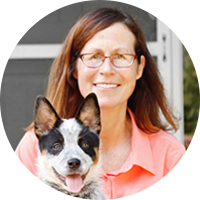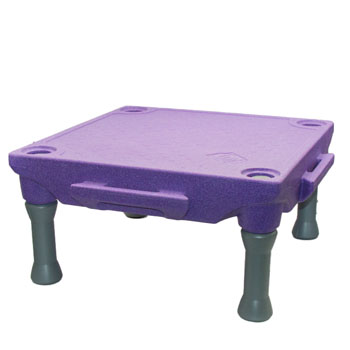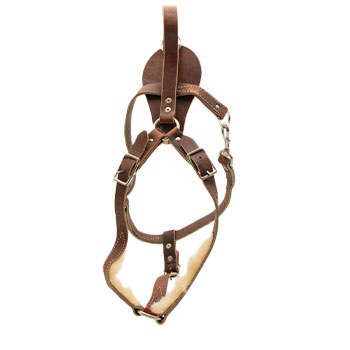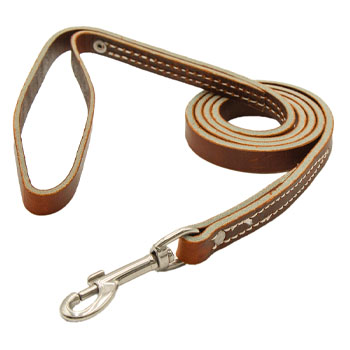May 17, 2013
Sometimes, when my police dog is tracking, he will stop to smell/lick animal odors. This is becoming a problem. Any help would be greatly appreciated.
Full Question:
I'm a police officer in Connecticut. My police dog is two years old. We just completed 4 months of training and he is doing well. He already has a couple of finds. My question is that sometimes when he is tracking, he will stop to smell animal odor. Sometimes it's so bad, that I have to grab him by the collar to pull him from that spot. He will even lick the area, and taste whatever he is smelling. He's a great tracking dog, but if he smells a certain odor, he will completely stop tracking and focus on that odor. Then he loses interest, and try's to find more animal odor to smell/lick. It seems like sometimes he can work through it, but, ever so often, it takes over his concentration, and the whole track is ruined. I've been giving him the "leave it" command which sometimes works. He won't urinate on a track (I finally fixed that problem), but the stopping and licking is becoming a huge problem. Missed a suspect last night hiding in the woods, because of this issue. Any help would be greatly appreciated. Thanks for everything you do!! 
 Ed's Answer:
Ed's Answer:
I know exactly what you are talking about here. It can develop into a serious problem for some dogs - even result in dogs being washed out of a K9 program.
You already found out that "over correcting" can shut the dog right down.
All you can do is really try and ID exactly the kind of scents your dog has problems with and collect them for use in training.
Maybe carry a zip lock bag with sterile bandage pads in it when you are out tracking. If the dog gets distracted - toss the bag down and come back later. Use rubber gloves and the sterile bandages to swab the area with it - trying to collect the odor.
Keep doing this and saving the scents in mason jars. Keep the jars in a cool dry location (a fridge).
Once this is done and you have several examples. Use gloves and cut small pieces out of the swabs - so you have small amounts of the distracting odor. Use this odor samples during obedience training. Make him do long downs next to it, on leash and do what you have to do to make him not smell the odor.
In other words, train the dog to ignore the ODOR OFF THE TRACK. When the dog is ignoring the odor, reward by having a PARTY with his favorite toy. Not just one short toss or tug but multiple tosses and tug sessions. We want the dog to look forward to the PARTY. We want the PARTY to be more important than the odor. That usually can't happen if you toss a ball one time and put the dog away.
The end of the training is to leave more and more odor out in obedience. Do recalls past it, etc.
When you think you have that down part, leave the small pieces (not big ones) on a training track, leave a real article 15 feet or so further down the track (wind at your back).
The goal being to offer only a slight amount of scent and show the dog that if it works through the odor he gets a reward pretty quickly. After that it comes down to you learning to fade the reward. That part is covered in our DVD with the DVD I did with Michael Ellis, Finishing Work.
I think you really need to understand reward frequency and how it relates to punishment.
The question will come up on how much you know about markers.
I hope this helps.
Regards,
Ed Frawley
You already found out that "over correcting" can shut the dog right down.
All you can do is really try and ID exactly the kind of scents your dog has problems with and collect them for use in training.
Maybe carry a zip lock bag with sterile bandage pads in it when you are out tracking. If the dog gets distracted - toss the bag down and come back later. Use rubber gloves and the sterile bandages to swab the area with it - trying to collect the odor.
Keep doing this and saving the scents in mason jars. Keep the jars in a cool dry location (a fridge).
Once this is done and you have several examples. Use gloves and cut small pieces out of the swabs - so you have small amounts of the distracting odor. Use this odor samples during obedience training. Make him do long downs next to it, on leash and do what you have to do to make him not smell the odor.
In other words, train the dog to ignore the ODOR OFF THE TRACK. When the dog is ignoring the odor, reward by having a PARTY with his favorite toy. Not just one short toss or tug but multiple tosses and tug sessions. We want the dog to look forward to the PARTY. We want the PARTY to be more important than the odor. That usually can't happen if you toss a ball one time and put the dog away.
The end of the training is to leave more and more odor out in obedience. Do recalls past it, etc.
When you think you have that down part, leave the small pieces (not big ones) on a training track, leave a real article 15 feet or so further down the track (wind at your back).
The goal being to offer only a slight amount of scent and show the dog that if it works through the odor he gets a reward pretty quickly. After that it comes down to you learning to fade the reward. That part is covered in our DVD with the DVD I did with Michael Ellis, Finishing Work.
I think you really need to understand reward frequency and how it relates to punishment.
The question will come up on how much you know about markers.
I hope this helps.
Regards,
Ed Frawley
100% (16 out of 16)
respondents found this answer helpful


Can't find what you're looking for?








